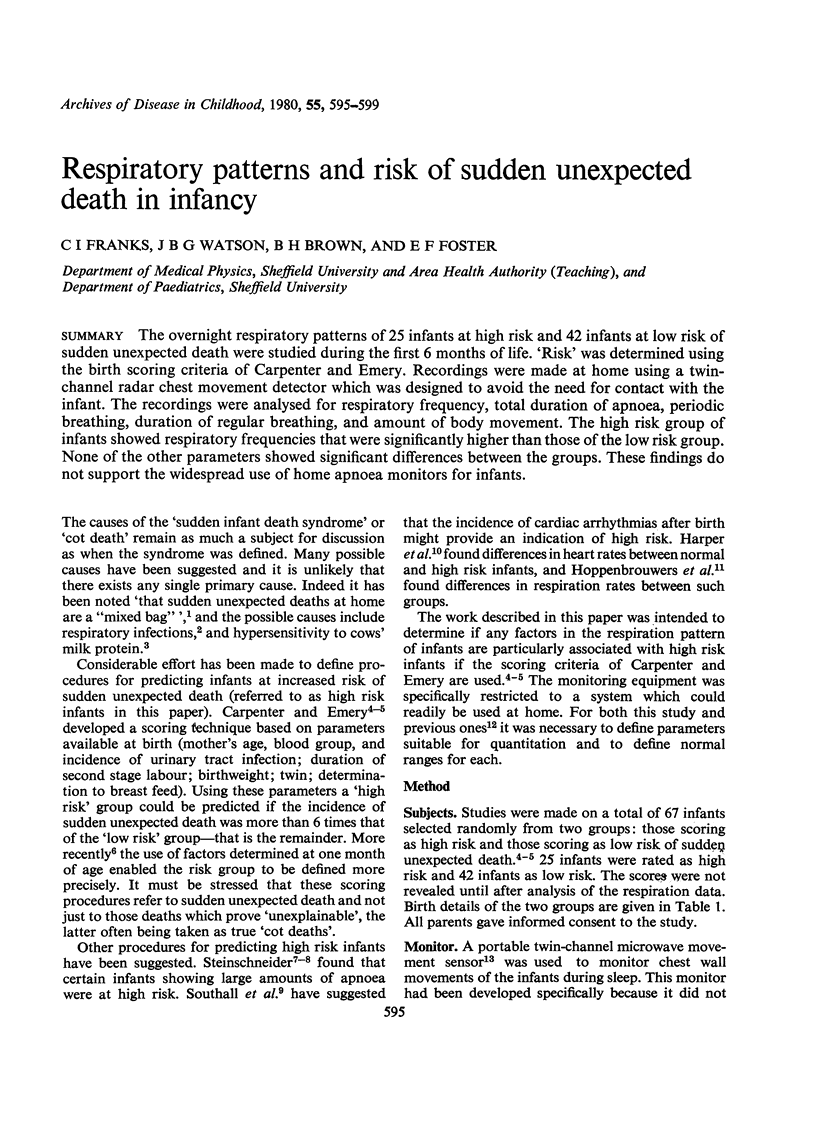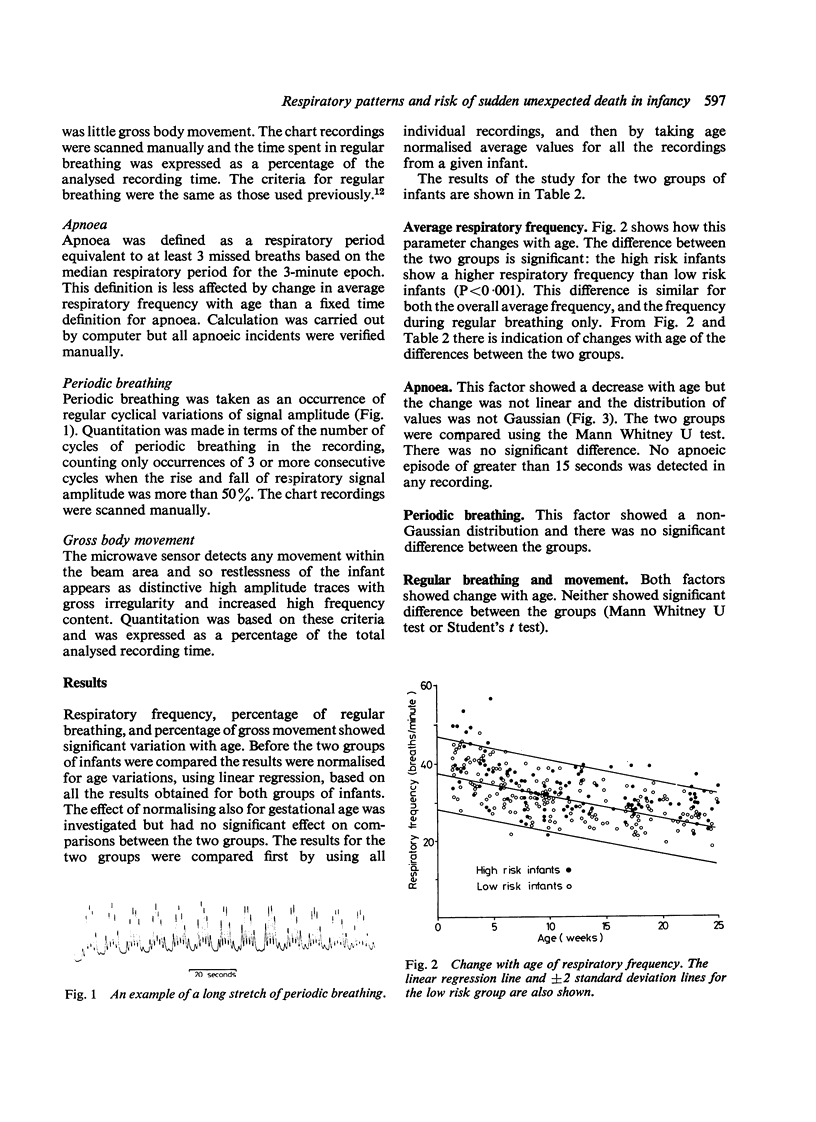Abstract
The overnight respiratory patterns of 25 infants at high risk and 42 infants at low risk of sudden unexpected death were studied during the first 6 months of life. 'Risk' was determined using the birth scoring criteria of Carpenter and Emery. Recordings were made at home using a twin-channel radar chest movement detector which was designed to avoid the need for contact with the infant. The recordings were analysed for respiratory frequency, total duration of apnoea, periodic breathing, duration of regular breathing, and amount of body movement. The high risk group of infants showed respiratory frequencies that were significantly higher than those of the low risk group. None of the other parameters showed significant differences between the groups. These findings do not support the widespread use of home apnoea monitors for infants.
Full text
PDF




Selected References
These references are in PubMed. This may not be the complete list of references from this article.
- Carpenter R. G., Emery J. L. Final results of study of infants at risk of sudden death. Nature. 1977 Aug 25;268(5622):724–725. doi: 10.1038/268724a0. [DOI] [PubMed] [Google Scholar]
- Carpenter R. G., Emery J. L. Identification and follow-up of infants at risk of sudden death in infancy. Nature. 1974 Aug 30;250(5469):729–729. doi: 10.1038/250729a0. [DOI] [PubMed] [Google Scholar]
- Carpenter R. G., Gardner A., McWeeny P. M., Emery J. L. Multistage scoring system for identifying infants at risk of unexpected death. Arch Dis Child. 1977 Aug;52(8):606–612. doi: 10.1136/adc.52.8.606. [DOI] [PMC free article] [PubMed] [Google Scholar]
- Franks C. I., Brown B. H., Johnston D. M. Contactless respiration monitoring of infants. Med Biol Eng. 1976 May;14(3):306–312. doi: 10.1007/BF02478126. [DOI] [PubMed] [Google Scholar]
- Harper R. M., Leake B., Hoppenbrouwers T., Sterman M. B., McGinty D. J., Hodgman J. Polygraphic studies of normal infants and infants at risk for the sudden infant death syndrome: heart rate and variability as a function of state. Pediatr Res. 1978 Jul;12(7):778–785. doi: 10.1203/00006450-197807000-00008. [DOI] [PubMed] [Google Scholar]
- Hoppenbrouwers T., Hodgman J. E., Harper R. M., Hofmann E., Sterman M. B., McGinty D. J. Polygraphic studies of normal infants during the first six months of life: III. Incidence of apnea and periodic breathing. Pediatrics. 1977 Oct;60(4):418–425. [PubMed] [Google Scholar]
- PARISH W. E., BARRETT A. M., COOMBS R. R., GUNTHER M., CAMPS F. E. Hypersensitivity to milk and sudden death in infancy. Lancet. 1960 Nov 19;2(7160):1106–1110. doi: 10.1016/s0140-6736(60)92187-5. [DOI] [PubMed] [Google Scholar]
- Salk L., Grellong B. A., Dietrich J. Sudden infant death. Normal cardiac habituation and poor autonomic control. N Engl J Med. 1974 Aug 1;291(5):219–222. doi: 10.1056/NEJM197408012910502. [DOI] [PubMed] [Google Scholar]
- Scott D. J., Gardner P. S., McQuillin J., Stanton A. N., Downham M. A. Respiratory viruses and cot death. Br Med J. 1978 Jul 1;2(6129):12–13. doi: 10.1136/bmj.2.6129.12. [DOI] [PMC free article] [PubMed] [Google Scholar]
- Southall D. P., Orrell M. J., Talbot J. F., Brinton R. J., Vulliamy D. G., Johnson A. M., Keeton B. R., Anderson R. H., Shinebourne E. A. Study of cardiac arrhythmias and other forms of conduction abnormality in newborn infants. Br Med J. 1977 Sep 3;2(6087):597–599. doi: 10.1136/bmj.2.6087.597. [DOI] [PMC free article] [PubMed] [Google Scholar]
- Steinschneider A. Prolonged apnea and the sudden infant death syndrome: clinical and laboratory observations. Pediatrics. 1972 Oct;50(4):646–654. [PubMed] [Google Scholar]


